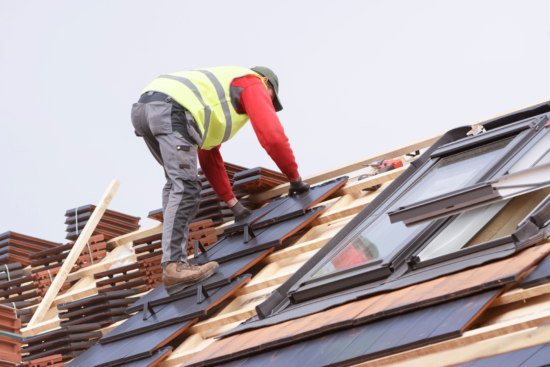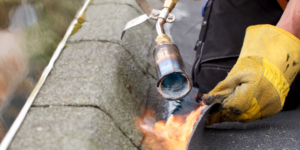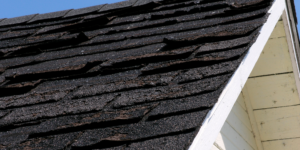© All Rights Reserved | Roof Replacement and Repair - Zaman Roofing LLC. | Website Design & CT SEO Powered by High Point SEO CT
- Google Rating5.0Based on 33 reviewsZaman Roofing - CT Roofing Contractors & Roof Repair5.0Sergey Y."Zaman Roofing” recently completed a roof replacement project in our condo complex, and we are extremely satisfied with their service. From start to finish, their team demonstrated professionalism, efficiency, and exceptional craftsmanship. They were prompt in their communication, providing detailed explanations and answering all our questions. The crew arrived on time, worked diligently, and completed the project within the estimated timeframe.Not only did Zaman Roofing exhibit outstanding technical skills, but they also ensured minimal disruption to our daily activities. They took great care to protect our property, cleaning up thoroughly each day and leaving no trace of debris behind.The quality of the new roof is outstanding. Zaman Roofing used top-grade materials and paid attention to every detail, resulting in a sturdy and visually appealing finished product. The roof has significantly enhanced the overall appearance of our condo complex.We would highly recommend Zaman Roofing to anyone in need of roofing services. Their professionalism, expertise, and attention to customer satisfaction make them a reliable choice for roof replacements. We are grateful for their excellent work and would not hesitate to hire them again in the future.Christopher Z.Zaman Roofing was AWESOME!!!! This is my third time doing a roof in CT on my third home and Zaman did an outstanding job on my rather unique roof line. They even replaced a skylight. I needed a Roof Contract in place before insurance would allow the purchase because the seller was a DeeBag. Zaman worked with my realtor, banker, etc and even waited patiently while the seller delayed the process by 4 months. The week I closed, Zaman Roofing was up and at em. Stripping, prepping and replacing. In and Out. Property was nice and clean after the work was complete. I would highly recommend.Steve TZaman Roofing, located in Berlin, CT, truly excels in providing top-notch roofing services. I am absolutely thrilled to give them a well-deserved 5-star review for their outstanding work. They have proven themselves as experts in roofing Berlin CT, and I couldn't be happier with the results.When it comes to roofing in Berlin, Zaman Roofing stands out from the competition. Their team of skilled professionals demonstrated exceptional attention to detail during the installation of my new roof. They meticulously handled every aspect of the project, ensuring both aesthetics and durability were top-notch.What impressed me the most was Zaman Roofing's commitment to customer satisfaction. From my initial contact with them, they were responsive, courteous, and eager to understand my specific roofing needs in Berlin. Their exceptional customer service throughout the entire process made me feel valued as a client.Zaman Roofing's expertise in roofing Berlin is truly commendable. They have an extensive portfolio of successful projects throughout Berlin, CT, showcasing their skill and knowledge in a variety of roofing styles and materials. Regardless of the complexity of the job, they have the necessary resources to deliver exceptional results.I cannot emphasize enough how satisfied I am with Zaman Roofing's services in Berlin, CT. Their professionalism, reliability, and dedication to their craft are unparalleled. If you're searching for exceptional roofing services in Berlin CT, Zaman Roofing is the company to choose. They will exceed your expectations in every way.In conclusion, Zaman Roofing unquestionably deserves a stellar 5-star rating for their exemplary roofing services in Berlin, CT. Their expertise in roofing Berlin and roofing Berlin CT shines through in their exceptional workmanship and customer service. I highly recommend Zaman Roofing for all your roofing needs.Gary G.Zaman replaced the roof on my 2,200 sq. ft. colonial in 2015. The workmanship was perfect. Unfortunately, over time, the top-of-the line shingles discolored. He was totally supportive in getting the manufacturer to replace them at no cost to me. He just replaced the roof with the new shingles. It was another perfect job. It was completed in one day. The crew was great and they cleaned the area spotless.Chris DWe used Zaman Roofing for our Roof and Gutter Replacement, I acquired 5 quotes for the work and found Zaman to be the most reasonable, it was a Good Decision to choose Zaman Roofing, Seweryn was Professional in every aspect and the Clean-up was nothing short of Amazing, I would Highly Recommend using Zaman RoofingRobert D.Excellent Service and Value - great crew and easy to deal with - highly recommended !Sunghoon P.Great work and reasonable price. I am so happy with their service. I asked a bunch of questions before and after the service and his responses were very prompt and straight to the point. Highly recommend.Adrienne M.I am so pleased that I used this company. My new roof looks fantastic. Such a hard working crew. Seweryn was informative and professional. Price was very completive. Don't hesitate to use them you will be very satisfied. Highly recommend!Nancy M.Good communication, timely response and knowledgeable. Very happy with our experience and highly recommend this company.Beata M.We used Zaman for our roof replacement recently and are very pleased. They replaced our roof in one day and gave us a very competitive quote. Good quality of work. Highly recommended.Lori K.They were here when they said they would. Professional & left everything neat ,cleaned up everything. They were in & out in a day & a half. Would recommend Zaman roifing.Dan R.A+ service, professional and quick response time.Anna G.Zaman and his crew provide great workmanship they installed new roofs they take great pride in the work they do. They were punctual and did a amazing job with the roof installation and clean up. Highly recommend Zaman Roofing to family and friends. Thank you for the opportunity to work with such a amazing contractorScott M.Awesome contractor, I would highly recommend him to family & friends. Seweryn & his crew were here on time & worked diligently. They were the happiest workers I've ever dealt with (I am a former construction project manager with the Federal government). Any & all questions were answered. My neighbors couldn't believe they finished the job in one day & complimented how great the new roof looks.Clement D.Great roofing contractors. I love to recommend it to my friends and family.Karen 9.With the quality, price, timeliness, all round nice guy and great crew, Zaman Roofing LLC is what other companies aspire to be.... Clean, helpful and a pleasure to recommend....james C.Excellent experience from start to finish, all appointments and work times met in a timely fashion, workmanship and clean up left nothing to be desired.Would be a definite recommendation, very pleased.Margaret B.I had obtained multiple quotes and did my due diligence research and Seweryn Zaman came back with fair price and good recommendations. He was professional, explained everything that he was going to do and never once he rushed me during decision process. He showed up on time with his hard working crew and finished my roof in one day. I was amazed with his crew who worked like busy bees. Very impressed with the clean up process and the end product. Two months after he finished my roof he was still helping me deal with the insurance company making sure I had everything I needed. Thank you SewerynSteve B.Very professional and easy to work. The crew came in, replaced my roof and then cleaned up everything! Highly recommended.Jim O.Competitive quote among four others. Seweryn Zaman provided larger color samples of the shingle colors we were interested in. He obtained the building permit, showed up on the day expected with his entire crew. Our older roof was on 24" trusses and needed more plywood replaced than anticipated. He got the additional sheets replaced on the day of the re-roofing. The crew worked with him late until the job was done and picked up every piece of old debris. The roof passed final town inspection with no concerns. Zaman Roofing is easy to deal with; he's responsive on text messages and phone calls. I used them in the past for an emergency repair and he found a well-hidden leak from the builder.Dale C.The crews did a good job, and the leader of the crew did a great job when they replaced the roof of my house in Farming on 7/6&7 this year. When they worked on the project, they worked professionally and in detail. We are very pleased with the work they have done, and highly recommend people to have the company worked on their roof projects.Forrest B.Zaman's was very professional, excellent quality of work and very responsive to our needs. This roofing experience was excellent from start to finish and provided an excellent value. Would certainly recommend them to any friend.Yonatan M.We used Zaman Roofing to replace our roof in 2019 and could not be happier with the service and product. A highly professional company and great personal interaction with the owner. The workers took great care of our landscaping, and the owner was there frequently to supervise the work and take care of finishing touches like flashing the chimney. We have had zero issues since then and highly recommend this company.Quinn V.Zaman was awesome. He was communicative, on-time, and was able to give me a quick inspection of our roof despite the rain. I rarely have a contractor tell me that I didn't need to spend any money, but Zaman told me my roof was fine for the next several years.magdalena K.We recently used Zaman Roofing to replace our 26-year-old roof. Right from the start they were great! Sevy was extremely professional and knowledgeable and gave us a great quote. Everything was done as they described and the final project looked great. The owner was on the job from start to finish as he promised.Ariadna G.Our experience with Zaman Roofing was excellent. I was very impressed with both their work and their customer service. Seweryn was very knowledgeable and professional.Larry G.What a wonderful business. Very responsive. They showed up exactly when expected, completed the project quickly and accurately and left no trace after clean up. All with a very competitive price. I would highly recommend Zaman to anyone looking to have roofing work done.STEVE R.I was very pleased with the roof and gutter repairs performed by Zaman Roofing on two of my buildings. Good workmanship and fair prices, I would recommend and use again.Danielle D.These guys stripped and reshuffled my roof is 1 day! They did an awesome job. Roof is beautiful. He uses a dump trailer which is great and they cleaned up well. Very happy with the work. Also pricing was fair.

The Hidden Risks of Putting Off Replacing Your Roof
Category: Roof Repairs • September 11, 2023
Is your roof deteriorating? Are you considering delaying that necessary replacement for a year or two? Think again. Hidden risks may increase the expense of delaying roof replacement. We’ll discuss the risks of waiting on roof replacement, the expense of a new roof versus repairs, the significance of regular maintenance, and how to decide if you need a new roof.
The dangers of delaying roof replacement
Your roof is your first line of defense against the elements. However, if neglected or after their lifespan, roofs can get damaged and worn out. Leaks are a major risk of postponing roof replacement. Cracked shingles or cracked flashing can let water in, damaging your ceiling, walls, and possibly your home’s structure.
Mold growth is another risk. Moisture from a leaky roof can foster mold growth. This poses health hazards for you and your family and can lead to costly cleanup.
You risk higher energy expenditures by delaying roof replacement. As your roof ages and becomes less efficient at insulating your home, you may need to turn up the AC in summer and heat in winter to stay comfortable.
Additionally, delaying roof replacement may increase repair expenses. Untreated issues like missing shingles or leaks can easily become severe issues. The longer you wait, the worse these repairs may become and damage ceilings and walls.
Neglecting roof maintenance may influence insurance coverage as well as safety! Insurance companies often require homeowners to maintain their roofs to file storm damage claims.
Never let these risks sneak up! Quickly replacing a roof when necessary, protects you and your home investment from unnecessary risks.
The cost of a new roof vs. the cost of repairs
It can be tempting to choose the cheaper option between a new roof and repairs. Who wants to spend more if they don’t have to? But this approach can cost you more in the long term.
Repairing tiny roof concerns may seem like a quick fix and a way to save money but think big. Small issues might grow into major ones that require significant repairs or replacement.
By repairing your roof instead of replacing it, you’re bandaging a growing wound. This strategy exposes your home to leaks and water penetration and increases repair costs.
However, a new roof may look expensive upfront. When you compare its lifespan and durability to constant repairs, replacing your roof becomes financially and practically sound.
A new roof gives you peace of mind that your home is protected from rain, snow, and wind. It can also save money on heating and cooling by decreasing heat loss in winter and preserving cool air in summer.
While fixing small faults may seem trivial, delaying necessary replacements could cost you more in the long run.
The importance of regular roof maintenance
The health and durability of your home depend on regular roof maintenance. Proactive roof maintenance can prevent slight issues from becoming serious ones.
Regular roof care includes cleaning. Over time, leaves, debris, and dirt can damage your roof and cause leaks. These materials may be cleaned regularly to extend roof life.
Another important part of roof care is checking for wear and deterioration. Check for loose shingles, damaged flashing, and water intrusion. Early detection lets you fix these issues before they become costly.
Visual inspections are helpful, but expert roofers should also evaluate your roof often. They know how to see issues that an untrained eye may miss.
Maintaining a healthy roof requires sufficient attic ventilation. Proper ventilation regulates temperatures and minimizes moisture buildup that causes mildew and roof degradation.
Regular maintenance and fast repairs maintain your home’s structural integrity and prevent health risks from water ingress and mold growth.
Maintenance of a functional and durable roof system is always preferable with prevention!
How to tell if your roof needs to be replaced
Does your roof require replacing? Many homeowners ask, and rightly so. The elements threaten your home and goods, thus your roof is crucial. But how do you know when to replace it?
Think about your roof’s age. Most roofs last 20–25 years, depending on the materials. Replacement may be necessary if your roof is approaching or beyond this age range.
Next, inspect your shingles. Are they broken, curled, or missing? Your roof may be deteriorating and needing replacement.
Water damage inside your home is another sign. Water stains on ceilings or walls may indicate roof leaks that need prompt care.
Check your roof deck for sagging or apparent indications like mold or rotting wood. These may indicate roof structural difficulties that require replacement.
Consult a roofing contractor for an examination. They can evaluate your roof and recommend repair or replacement.
In conclusion, preventative roof inspections can prevent calamities. If you notice these warning signs and fix or replace them as needed, you can keep yourself and your home secure (never use “in conclusion”). Avoid waiting—watch for these signs that it’s time for a new roof!
Conclusion
The condition of your roof is important. Failure to replace a broken or aging roof can harm your home and finances. The upfront cost of a new roof may seem daunting, but ongoing repairs or structural damage are much more costly and risky.
A well-maintained roof requires regular inspections. Early intervention can prevent modest concerns from becoming major ones. Knowing the indicators that require a replacement is also important.
Before water leaks through your ceiling or shingles fly off in heavy winds, act. Check your roof and hire a contractor if needed.
Remember that a new roof protects your most significant asset—your home. Schedule that much-needed replacement today!




